Effects of habitat disturbance on tropical forest biodiversity
- PMID: 28461482
- PMCID: PMC5468684
- DOI: 10.1073/pnas.1611855114
Effects of habitat disturbance on tropical forest biodiversity
Abstract
It is widely expected that habitat destruction in the tropics will cause a mass extinction in coming years, but the potential magnitude of the loss is unclear. Existing literature has focused on estimating global extinction rates indirectly or on quantifying effects only at local and regional scales. This paper directly predicts global losses in 11 groups of organisms that would ensue from disturbance of all remaining tropical forest habitats. The results are based on applying a highly accurate method of estimating species richness to 875 ecological samples. About 41% of the tree and animal species in this dataset are absent from disturbed habitats, even though most samples do still represent forests of some kind. The individual figures are 30% for trees and 8-65% for 10 animal groups. Local communities are more robust to disturbance because losses are partially balanced out by gains resulting from homogenization.
Keywords: deforestation; lambda-5 index; mass extinction; multiton subsampling; species extinction.
Conflict of interest statement
The author declares no conflict of interest.
Figures



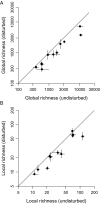


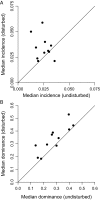
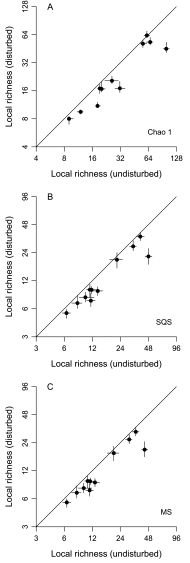

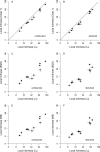
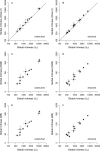
Comment in
-
Global biodiversity loss from tropical deforestation.Proc Natl Acad Sci U S A. 2017 Jun 6;114(23):5775-5777. doi: 10.1073/pnas.1706264114. Epub 2017 May 26. Proc Natl Acad Sci U S A. 2017. PMID: 28550105 Free PMC article. No abstract available.
References
-
- Sala OE, et al. Global biodiversity scenarios for the year 2100. Science. 2000;287:1770–1774. - PubMed
-
- Brooks TM, et al. Habitat loss and extinction in the hotspots of biodiversity. Conserv Biol. 2002;16:909–923.
-
- Laurance WF, et al. Averting biodiversity collapse in tropical forest protected areas. Nature. 2012;489:290–294. - PubMed
-
- Feeley KJ, Silman MR. Biotic attrition from tropical forests correcting for truncated temperature niches. Glob Change Biol. 2010;16:1830–1836.
MeSH terms
LinkOut - more resources
Full Text Sources
Other Literature Sources

